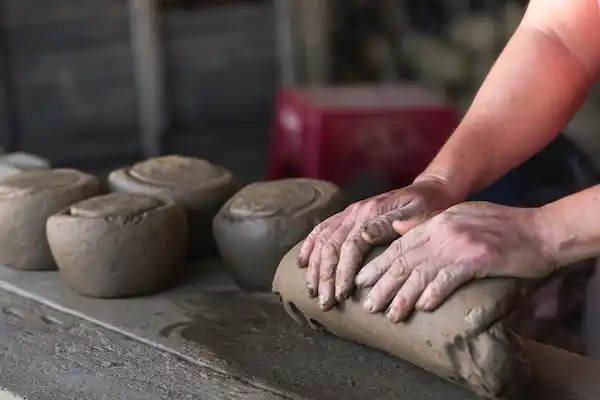Baking clay in an oven might be tricky, but as long as you know the details, it’s one of the easiest ways to get your clay baked up! Can you bake natural clay in an oven? This article will reveal the truth about baking natural clay in an oven and what you need to do to get the best results from this type of project.
Can you bake clay in a regular oven?
Yes, you can bake clay in a regular oven. However, you will need to follow these few steps:
- Remove the fire from your oven and allow it to cool down;
- Measure out what will fit into your range and
- set the timer for
- 20 minutes for small items,
- 25 minutes for medium objects,
- 30 minutes for large items.
The clay should be wrapped in aluminum foil before placing it into the oven to avoid clumps forming and sticking together. If you find that your clay has been cracked or damaged by the high heat of a regular oven, then consider baking it at a lower temperature of around 200 degrees Fahrenheit.
Types of clays
The types of clays that can bake in an oven are as follows
- Kaolin
- bentonite
- ball clay
- and fire clay
The other clays are slip, porcelain, high-fire stoneware, and bisque.
To see if a type of clay is safe to bake with, look for the label kiln-safe or oven-safe. If it says kiln-safe or oven-safe, you should be able to use it. If not, contact the manufacturer for more information.
Types of oven
The types of the oven are:
- microwave
- convection
- conventional
- and toaster
Convection is the best option for clay. Microwaves should be avoided because they cook from the inside out. Moist foods like bread or casseroles become soggy and dry on the inside. Additionally, toaster ovens do not have a fan to circulate heat. Baking clay in a conventional oven is difficult because natural clay bakes slowly at low temperatures for hours.
Can you bake any clay in the oven?
The standard answer is that you can’t bake clay at high temperatures. This is true–the melting point of all clay types (terra cotta, stoneware, etc.) is much higher than that of ceramic or porcelain clays. Most natural clays also have varying degrees of water content. Baking them at high temperatures would cause the material to swell and collapse–it would also ruin your oven!
Can you bake natural clay in an oven?
Yes, you can bake natural clay in an oven. All you need is some tin foil and your clay. The way to do it is by wrapping the tin foil around the clay and putting it in the oven for about 15 minutes at 250 degrees Fahrenheit. You should be able to tell if its texture does it. When it’s baked, it should be a little softer than when it’s raw but still have a slight crunchiness.
How to bake natural clay in the oven?
follow these steps to bake natural clay in an oven
- Firmly press the clay into a loaf pan.
- Poke a hole through the top with a knife or skewer.
- Allow the dough to rest for about 10 minutes before baking.
- Place on a rack inside the oven and set at 350 degrees Fahrenheit for 25-30 minutes.
Let cool before removing it from the pan. Allow the dough to rest for 10 minutes before baking.
Benefits of natural baking clay in an oven
Natural clay can be baked to create a durable product that can withstand different weather and extreme temperatures. However, not all natural clays are the same. Other clays require additional steps when baked, and there are a few precautions to take before deciding to bake your clay for craft projects.
Baking with your oven has many benefits:
- You don’t have to worry about fire safety or rain as possible factors.
- You have more control over the temperature.
- It allows for more delicate crafting methods.
Conclusion
This post has been answered with a resounding yes! It turns out that it is possible to bake natural clay in the oven. Some of these clays are water-based so they can be baked at temperatures up to 500 degrees Fahrenheit. However, we recommend you research whether or not your clay will be safe for baking before doing so. Although it is not necessarily a danger to bake clay, it can change the thickness and shape of the clay.
I am Anand, and I am a business owner and consultant in my day job. I have spent years studying what’s inside the products we buy. ‘Feedrer’ is a wordplay on you-know-who and talks about all things food.
